Today's journal was written by one of the REU students, Daren McGregor. Daren is entering his senior year at Colby College in Maine, where he is majoring in geology.
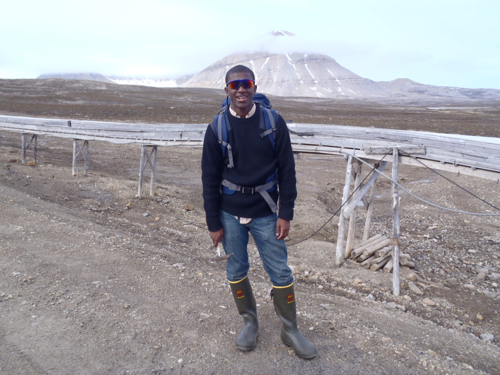
Fire and Ice
Some say the world will end in fire;
Some say in ice.
From what I've tasted of desire
I hold with those who favor fire.
But if it had to perish twice,
I think I know enough of hate
To say that for destruction ice
Is also great
And would suffice
-Robert Frost, 1920
Three weeks into what has been an exciting summer research program, I can safely condense the nature of our work into two opposites: fire and ice.
Ice
Ice comes with the territory when you are deep within the Arctic Circle. Even though the current season is summer. In Ny-Alesund, I am trapped in some kind bizarre half-winter-half-summer amalgam. On most days, the skies are clear, and the sun pounds my face. But the temperature rarely strays above 50 degrees.
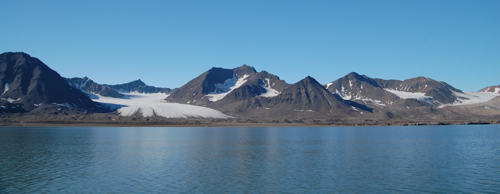
Should I find myself at a window with a clear view, the summer landscape is surreal yet breathtaking: snow-capped mountains in every direction. Surrounding these mountains are glaciers, tumbling down the slopes from higher elevations and tearing out deep valleys through 500 million-year-old-bedrock. Directly west, I gaze upon the mighty Kronebreen, an active glacier that dramatically opens up into the fjord.
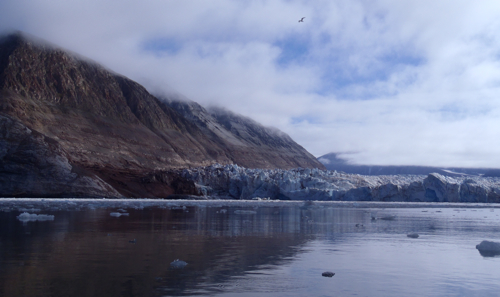
Thunderclaps punctuate the serene silence of the landscape. But these thunderclaps are not harbingers of foul weather. Rather, each loud crack is the sound of ice breaking from the 30-meter-tall sheer ice face, known as a calving event.
http://
These events beget hundreds of icebergs a day, which all float aimlessly around the fjord. We are young geologists thrust into an environment of surreal natural beauty, tasked with studying that beauty and figuring out how to maintain and preserve it for as long as the climatic consequences of gross human consumption will allow. Tis a sad fall from grace—a mighty mountain glacier, millennia in the making, threatened by the burning fires of modern industry.
Fire
The importance of our task requires a fire in our hearts commensurate to the challenges that we face. Through cold and salty ocean sprays and the ever-present hazard of death by polar bear, we soldier on, dedicated to our research.

In our pursuit of answers, we take failures in stride and do our best to learn from them. Some days are colder than others, but the knowledge gained every day is what warms my soul. But that warmth is eclipsed by a much more intense heat; a burning question that makes my moon-less nights even more restless.
What is going on in front of the Kronebreen glacier?
In answering that question, I prefer to rely on facts and hard data—intuition is best served in the humanities. The facts that I base my research on are reasonably straightforward. They include: (1) the glacier is actively retreating, or melting; (2) the bottom of the fjord is covered with soft sediments; (3) the sediment accumulated by the glacier during transport is being deposited into the fjord during said melting. Thus, there has to be some form of relationship between the sediments under the glacier and the sediments in the fjord itself. My research intends to explore and quantify the nature of that relationship. The primary technique that I use is called gravity coring.
Geologists and dogs both like to dig holes, but what makes them different? Dogs like to dig with their paws. Geologists like to dig with expensive and shiny equipment. My weapon of choice is a 20 kg gravity corer, named Carl. On a given day, I use a winch to lower Carl within ten meters of the seafloor, then release the winch, allowing the core to free fall.
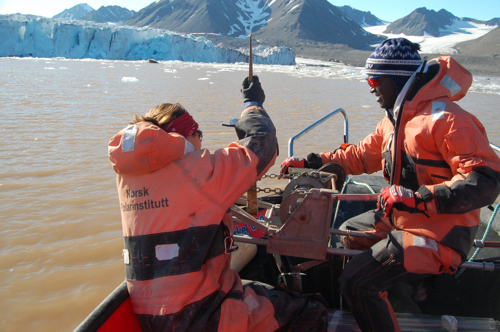
Resistance due to water aside, Carl pummels a seven-square-inch area of the seafloor with almost 2,000 joules of energy, embedding himself about 60 centimeters into the muddy bottom. That 60 centimeters of tube represents a tiny slice of earth history, preserving the sediment that the glacier deposited into the fjord, in chronological order from bottom to top. That kind of information is useful in terms of furthering understanding of the geological forces operating in the fjord.

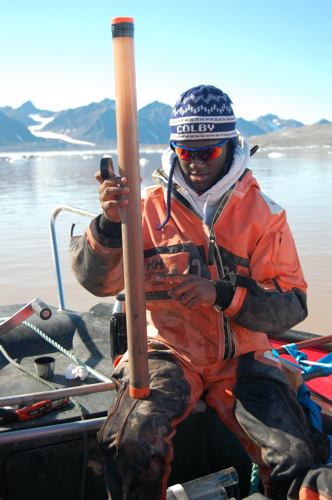
Further, techniques like x-ray fluorescence allow me to study the chemical relationships at work. Amounts of a certain ion or element can give clues as to the bedrock that the sediment was initially eroded from. As of this writing, I have 28 cores from all along the fjord, meaning that I can trace patterns in several directions, like along the ice face, or away from the glacier and up the fjord.

When the summer is done, I will have an immense array of data at my disposal. I will spend my senior year analyzing it and hopefully drawing a few meaningful conclusions. But meaning conclusions are not guaranteed. Nonetheless, I will look back positively on a great summer experience.


Comments